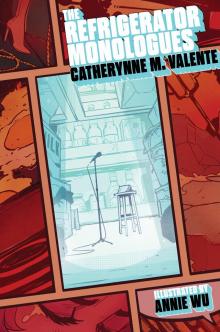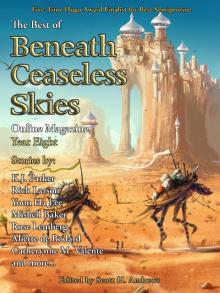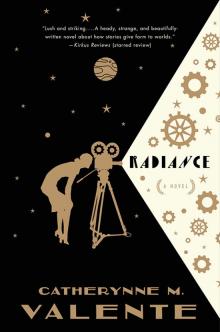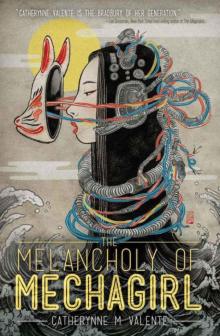


Cairo
Max Rodenbeck
The mausoleum, one of the most beautiful the medieval city preserves, took as its model the Dome of the Rock in Jerusalem. The Mamelukes had recently recaptured this third-holiest shrine in Islam from the Crusaders. There, a gilded dome covered a boulder from which the Prophet Muhammad was said to have sprung on a winged horse in a miraculous night flight to the seven heavens. An octagonal ambulatory surrounded the sacred stone itself. In Qalawun’s mausoleum in Cairo a similar gallery—ready-made for pious circumambulation—ringed instead the cenotaph of this former slave who had risen by strength and cunning to rule the wealthiest realm west of Samarkand. A body of prized eunuchs mounted guard to ensure proper respect, just as at the sultan’s harem in the Citadel. The tomb chamber protruded into the roadway, where passersby could bless the sultan in his grave and profit from the paid Koran readers who chanted night and day from its windows.
Qalawun’s origins and his unpopularity while he ruled were eventually forgotten. He was never elevated to sainthood, but he did found the closest thing the Mamelukes ever had to a dynasty. His sons and grandsons continued to rule—and to build spectacular tombs—for a further century before their own Mamelukes ousted them. His hospital treated patients for hundreds of years—at the rate of 4,000 a day in its fourteenth-century prime. Its reputation eventually faded. Before crumbling entirely, the hospital became an insane asylum, and this was replaced in the nineteenth century by an eye clinic.
But the magnificent tomb still stands, its dome and minaret dominating the most monument-packed stretch of street in the city. Tourists are the only visitors now, but reports from the nineteenth century say it was even then still believed that the only certain cure for headache was to rub the stone turban atop Qalawun’s cenotaph.
THERE WAS ANOTHER, darker reasoning behind the medieval tomb-building frenzy. The custom of visiting and worshiping in graveyards was also an act of appeasement. It came in response to the anger of the heavens witnessed by Cairenes as famines and epidemics ravaged their city again and again throughout the period of its greatest splendor. The cemeteries did not just grow; they expanded in sickening waves.
Nature’s whim had always made the level of the Nile a matter of intense public concern. The earliest Muslim governors had built a Nilometer on the island of Roda facing Misr al-Fustat. (It went out of use only a century ago, but still stands on the southern tip of the island.) In the late summer flood season, heralds wearing yellow bandannas would run through the city to announce the day’s reading. Shopkeepers tipped them gratefully, since the river level affected both prices and tax estimates. When it reached the required sixteen cubits, the government could be sure of a plentiful harvest and full coffers. If it rose too high or fell short, trouble was at hand.
This happened repeatedly between the tenth and fourteenth centuries, often with appalling results. So dreaded was the temper of the river that when the Arabic grammarian Ibn al-Nahas strolled along its bank humming to himself one day in A.D. 950, some alert citizen took him for a sorcerer. Imagining that the scholar was casting spells on the river, the vigilante hurled him into the water, where he drowned. When a disastrous drought came in A.D. 967, the ensuing disorder eased the Fatimids’ conquest of Egypt.
The Nile’s capriciousness was indiscriminate, however. The Fatimid caliph himself suffered from the calamitous seven-year dearth of 1065–72. In those years the city succumbed to panic. Bread, say the chronicles, was auctioned at an unbelievable twelve dinars a loaf*8—a price so far beyond the reach of the poor that some were said to have resorted to fitting meat hooks to ropes so as to fish unlucky pedestrians off the street and eat them. The historian al-Maqrizi says the caliph al-Mustansir was forced to sell precious objects, furniture, horses, arms, and eventually all the movable contents of his palace. When he was reduced at last to squatting on a mat on the floor of his throne room and living off charity, the women of his court fled. The Shi‘ite princesses set off for the rival Abbasid city of Baghdad, “their hair disheveled, howling with hunger,” only to fall outside the walls of Cairo and die of starvation. Al-Mustansir’s humiliation now touched bottom: the caliph was forced to pawn ornaments from the tombs of his ancestors.
Al-Mustansir’s possessions cannot have brought in very much. Al-Maqrizi—who, as a Sunni cleric, admittedly had it in for Egypt’s former Shi‘ite masters—tells us that at the height of the famine a wealthy widow pawned a necklace that had cost her 1,000 dinars. All it fetched was a sack of flour. The unlucky lady hired guards to defend her pathetic prize, but even so, a mob attacked them outside the city gates and relieved her of all but a fistful. This she made into a biscuit, which she carried to the door of the caliph’s palace. “People of Cairo,” she shouted to the crowd that gathered, “blessings on our master al-Mustansir. Providence has proven the goodness of his rule, since I have bought this biscuit for 1,000 dinars!”
The poor lady’s scouring sarcasm—and her tone is still typical of Cairene protests—was to no avail. There was no uprising. The caliph, rescued by the arrival of his army from Syria, went on to rule for another twenty-five years. His dynasty survived another century. The tribulations of al-Mustansir, moreover, were to pale in comparison with the horrors that befell Cairo thirty years after the fall of the Fatimids.
The visiting doctor Abd al-Latif of Baghdad witnessed these firsthand. As it became clear that the flood of the year 1200 was insufficient, he relates, all those who could afford to abandoned Egypt altogether. Those who could not took refuge in the capital and shared its ghastly fate:
For when the sun had entered the sign of the Ram the air was corrupted, the plague and contagion began to make itself felt, and the poor, pressed by famine…ate carrion, corpses, dogs and the excrement and filth of animals. This went on for a long time, until they began to eat little children….
When poor people began to eat human flesh, such was the horror and shock that these crimes became the chief topic of conversation….But soon they grew used to such things, and developed quite a taste for these detestable foods, and saw men make it their ordinary nourishment, to eat as a treat, and make reserves of it….
A large number of people crossed to the island of Roda and hid out in mud huts from where they hunted passersby to kidnap them. The authorities were notified and set out to kill them, but the cannibals escaped. There was found in their huts a large quantity of human bones. A man who is honest told me they counted 400 skulls….
As for the number of the poor who perished from exhaustion and hunger, God alone knows….This should be regarded as a slight example…for the intelligent to realize the horror seen at Fustat and Cairo: in the streets where I trod, there was no single one where the feet or the eyes did not meet with a corpse or a man in the throes of mortal agony, or even a large number of people in this unhappy condition….
They carried away…from Cairo each day between 100 and 500 bodies….At Fustat the number of dead was incalculable: they could not inter them, but contented themselves with throwing them outside the town. In the end there were no more people even to lift them and they remained in the market, and between the houses and shops….The greater part of the town of Misr was depopulated….I have been told there had previously been at Fustat 900 makers of rush mats, and there remained only fifteen. One could not but apply the same proportion to the other crafts.
Abd al-Latif goes on to say that the number of registered dead in the two years of famine—that is, those who were properly buried—was 110,000. He believed the total to be far higher.
At that time Misr al-Fustat and Cairo, though only a few miles apart, were rival cities. Most commerce and industry still centered closer to the Nile at Fustat, even though a serious fire had ravaged the town at the end of the Fatimid era. (The fire was deliberately set by a Fatimid wazir, who feared that advancing Crusaders would use unwalled Fustat as a vantage point for attacking the imperial enclosure of al-Qahira.) Cairo, with its finer houses and government offices, was just beginning to dominate its forebear. The famine
accelerated the decline of Misr al-Fustat. Abd al-Latif says that its abandoned buildings were plundered for wood and fittings. In better-policed Cairo, meanwhile, property prices fell to one-sixteenth of their previous value, which must have encouraged survivors to move in.
CAIRO RECOVERED. It grew rich again, and its population had probably doubled by the time the Grim Reaper returned a century and a half later. In 1347 slave traders from the Black Sea brought with them something far deadlier than a cargo of future Mameluke warriors: the Black Death. The plague infested the whole of the known world, but nowhere was it fiercer than in Cairo. Over two years it wiped out an estimated one-third of the populartion. The number of victims, al-Maqrizi records, surpassed 1,000 a day:
A man would sense that he had fever in his body. Then he would feel nauseated and spit blood, with death following. One after another the people of his household would go after him until all of them had perished. As everyone left alive was sure that he would die of the disease, all of the people prepared themselves for the end, increasing their charities, making expiation and turning to worship.
In the wake of this epidemic, says Cairo’s preeminent chronicler, you could walk the busy mile between the two old city gates, Bab Zuwayla and Bab al-Futuh, without once being jostled.
It was a blow from which the city might have recovered—like the towns of Europe—if only the disease had not struck repeatedly, and often in the pneumonic form which is far more contagious. Between 1347 and 1517 there were 55 plague outbreaks, among them 20 epidemics. From 1517 to 1894 the plague was reported in 133 years, with 33 major epidemics. While the population of Europe grew from the fourteenth century onward, Egypt’s declined. In 1800 it was a third of what it had been at the time of the Arab conquest 1,200 years before. The devastation was economic as well. Revenue from Egypt’s land tax in 1500 was a mere quarter of its level in 1200. Fewer Mameluke slaves could be bought and equipped, and of these many succumbed to the plague, which in itself meant a significant loss of capital. This whittling away of the sultanate’s army and resources was one reason why the invading Ottoman Turks found it so easy to overrun the Mameluke realm at the beginning of the sixteenth century.
Cairo boasted the greatest army and proudest citadel of the age, but it was utterly defenseless against disease. Fatally, ruler and ruled alike continued to ascribe the plague to heavenly anger. Fanaticism and superstition flourished. During an outbreak in 1438 the sultan was assured by a sheikh of the al-Azhar mosque that “If fornication spreads among men, the plague appears among them, also if women adorn themselves and walk in the streets….” Until a public outcry forced him to relent, the sultan banned women from leaving their homes.
Life somehow went on amid the misery. The city survived. Some of its citizens prospered: the mystics and astrologers and Koran chanters, the undertakers and sellers of the victims’ flea-infested clothes, which seventeenth-century European visitors were appalled to find for sale in the markets. And, of course, the tomb-builders.
Alexander Kinglake, author of the travel classic Eothen, arrived in 1835 to find himself a fearful witness to one of the last devastating plagues. Most Europeans had chosen to flee the city, but this foolhardy Briton stayed. During a sojourn of only three weeks his landlord, his banker, the doctor who treated him for a fever, a magician he hired, his donkey driver, and the brother and sister of his household servant all died of the disease:
When first I arrived at Cairo the funerals that passed daily under my windows were many, but still there were frequent and long intervals without a howl…these intervals became less frequent and shorter, and at last the passing of the howlers from morn to noon was almost incessant. I believe that about one-half of the whole population was carried off by this visitation.
He was wrong. According to official figures it was only a quarter of Cairo’s 250,000 people.*9 But still one can understand Kinglake’s astonishment when he found, in a busy cemetery outside the city, swings and festival tents set up for a mawlid.
CAIRO HAD ATTAINED the pinnacle of its fortunes when Sultan al-Nasir Muhammad ibn Qalawun died of old age in 1341. This son of the hospital-building Qalawun had ruled continuously since the beginning of the century—a record never surpassed by any Mameluke sovereign. Despite his cruelty—he had some 150 of his amirs killed and thousands of lesser opponents tortured by the most diabolical methods—al-Nasir Muhammad’s reign had been an interlude of peace and prosperity. In wealth, size, and power Cairo was unrivaled in the known world. The Ottoman Turks to the north were not yet a threat; the Mongol menace from the east had receded. Christian Europe now sent merchants, not warriors, to the Mameluke capital, which reaped phenomenal profits from its monopoly of trade with the Orient. The sultan himself cashed in handsomely. By a redistribution of fiefdoms he had forced on his amirs, five-twelfths of the empire’s revenues—including the tax receipts of Mecca, Damascus, and Aleppo and the tariffs of Jedda, Alexandria, and Tripoli—now flowed directly into his coffers in the Citadel. Al-Nasir Muhammad’s eleven daughters received a dowry of some 800,000 gold dinars each. His fourteen sons were the wealthiest men in the world.
They were not so fortunate in other ways. During the six short years that followed his death, murder and intrigue eliminated five of these sons from the succession. Soon after their brother Hasan, a freckled, red-haired boy of twelve, acceded to the throne in 1347, the Black Death struck down a third of his capital’s people.
Ironically, the youthful Sultan Hasan found himself richer than ever. As whole families were erased, thousands of victims died intestate. Their property reverted to the ruler. Perhaps in the hope that an act of piety would appease God (or maybe encouraged by courtiers seeking commissions and kickbacks), Hasan decided to spend this hoard on the most gigantic religious edifice yet seen in Islam. It would not be complete, of course, without the most glorious royal tomb to grace Cairo.
The site Hasan chose was across from the polo ground below the sumptuous Striped Palace his father had built in the Citadel, from whose windows he could watch the progress of construction. The work began in 1356, and for five years thereafter the treasury hemorrhaged funds at a rate of 1,000 dinars a day. The building’s lavish ornamentation reflected the eclectic outlook of the Mamelukes’ imperial city. Its mammoth sunken doorway, capped with a stone semidome carved into stalactites as intricate as the inside of a pomegranate, mimicked the portals of Seljuk mosques in Anatolia. Chinese porcelain inspired the stone-carved lotuses and hyacinths that flanked the great doors, which were of burnished bronze worked into a mesmerizing pattern of starbursts. The stone door frames of the interior, tiered in black and white stripes, showed the influence of Muslim Spain. Twenty-seven shades of marble from across the Mediterranean paved the courts and chambers and fountains inside. Yet the whole projected an austere aesthetic and a scale so powerful that it could only have been at home in the great, bustling capital that was Cairo.
Sultan Hasan’s mosque, madrasa, and tomb covered 10,000 square yards. It had walls of cut limestone 130 feet high, with minarets towering 150 feet further. They were so lofty, in fact, that when one of them collapsed before completion it was said to have crushed 300 onlookers. This single building contained four complete apartment buildings providing free lodging to 500 students along with a salaried staff that included two physicians and a surgeon as well as professors, calligraphers, a professional incense burner, six prayer leaders, 51 prayer callers, and 120 Koran readers. The dormitories, six stories high and placed at the corners of a vast central courtyard, surmounted a ground floor incorporating kitchens and wells in addition to an arcaded market two acres in area whose rents were to pay for maintaining the institution. Colossal vaults opened off the sides of the courtyard between the colleges. The one facing Mecca was deeper than the others and was paneled with marble marquetry and bordered with a stucco frieze of lotus blossoms spiraling around a Koranic inscription in ornate Kufic script.
Daringly, the gold- and silver-inlaid doors flanking the pra
yer niche opened onto the sultan’s own domed tomb chamber. Turning to Mecca, the faithful would worship facing Hasan’s cenotaph. The idea was that, just as his subjects had prostrated themselves before him when he was alive, so they would bow their foreheads to the ground before him after his death. But this peculiar vision was not to be fulfilled. Sultan Hasan made the fatal error of trying to curtail the power of both his generals and the court eunuchs. As the intrigue mounted, the sultan, now aged twenty-six, fled the Citadel. He was hunted, captured hiding in the city, and killed. The whereabouts of his body were never revealed.
His mosque never was completed to the last detail. To this day you can see the marks made by master stonecarvers who sketched in designs that were to be finished by apprentices. Sultan Hasan’s monument to the plague was, however, so sturdily built that rebels later used its roof to fire catapults and artillery at the Citadel. At least one wary sultan had the front steps demolished to prevent access, which is one reason why it is so well preserved—right down to the tomb doors’ brilliant gold inlay, which has miraculously survived intact.
The Mosque of Sultan Hasan still towers above all the other mosques of Cairo. Its stern facades, with their astoundingly modern-looking vertical panels of windows, still seem intent on warding off the disease raging outside. And when you slip off your shoes and penetrate the interior, the spell of the place still holds. A dark corridor disorients at first, sending you left and then right and then left again, tantalizing you with other passages, other possibilities, before drawing you to a rectangle of light that opens on the tremendous volume of the courtyard, where you blink and stand humbled by the scale and perfection of this vision of peace.














